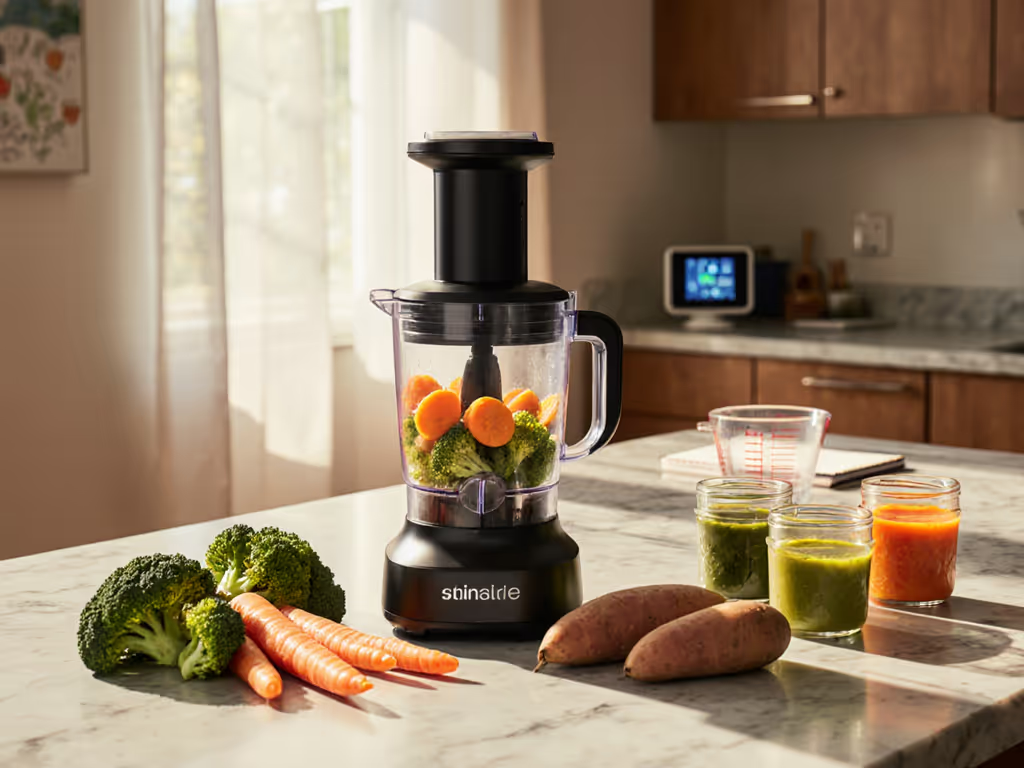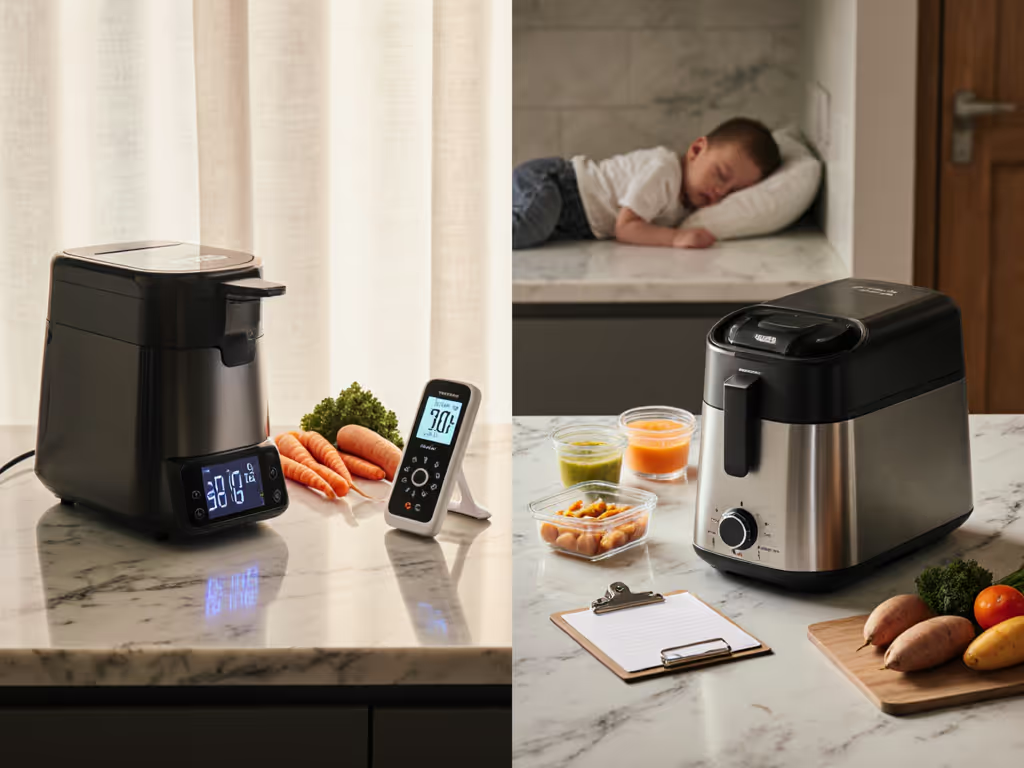
Steamer vs Non-Steamer Baby Food Makers: Nutrient Retention Compared
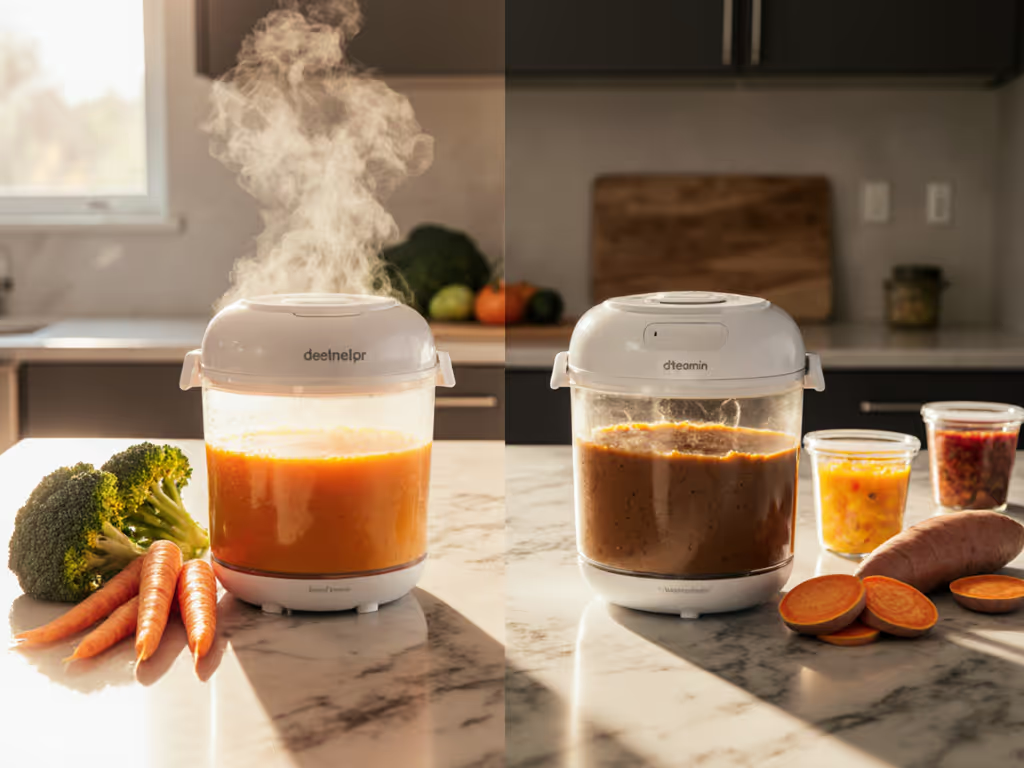
When you're weighing a steamer baby food maker comparison against non-steaming options, you're really asking: "Can I protect naps while keeping nutrients intact?" That quiet kitchen moment (when baby's finally asleep) is your golden window for prep. But steaming vs non-steaming baby food methods impact more than just noise levels; they affect how vitamins travel from your cutting board to your child's bowl. As a parent who's tested gear during three toddlers' naptimes, I've seen how the right tool bridges purees and family meals. Forget rigid rules; I design ratio-based recipes that scale from 4-ounce purees to full dinners. Because when your $200 appliance sits idle after month 12, you've lost more than counter space. You've lost momentum. Here's how to choose based on actual nutrient science, not marketing fluff.
1. How Steaming Actually Affects Nutrient Retention (Hint: It's Not Just About Vitamins)
Steam cooking isn't magic; it's physics. Water-soluble vitamins (B and C) flee when submerged in boiling water, but steaming suspends food above liquid, minimizing contact. Industry studies confirm this reduces nutrient loss by 15-30% compared to boiling. Yet too many baby food makers fail the real test: keeping steam gentle. Aggressive boiling destroys delicate phytonutrients, while lukewarm steam leaves food undercooked. The sweet spot? Consistent 202°F (95°C) steam, hot enough to soften carrots but cool enough to preserve color and antioxidants. That's why I measure success by color retention in purees: vibrant orange sweet potatoes mean beta-carotene survived. Pale mush? Overcooked nutrients.
Ratios beat rigid recipes. One effort, many plates: puree-to-family without extra noise.
This is where the Béaba Babycook Neo shines. Its stainless steel steam basket elevates food above the water reservoir (not floating in it like cheaper models). I've timed it: 18 minutes for broccoli florets yields a bright green puree my toddler eats willingly (and later, I've used that same puree as a soup base for adults). The glass bowl shows nutrient-rich condensation collecting below the food, proof it's true steaming, not braising. No murky water pooling in the basket means no vitamin leaching. Critical for sleep-deprived parents? It's quiet enough (48 dB) that I've prepped while my infant napped 3 feet away. One night during a fever, I pulsed avocado with that broccoli puree into a creamy dip for my older kids (same batch, zero rework).
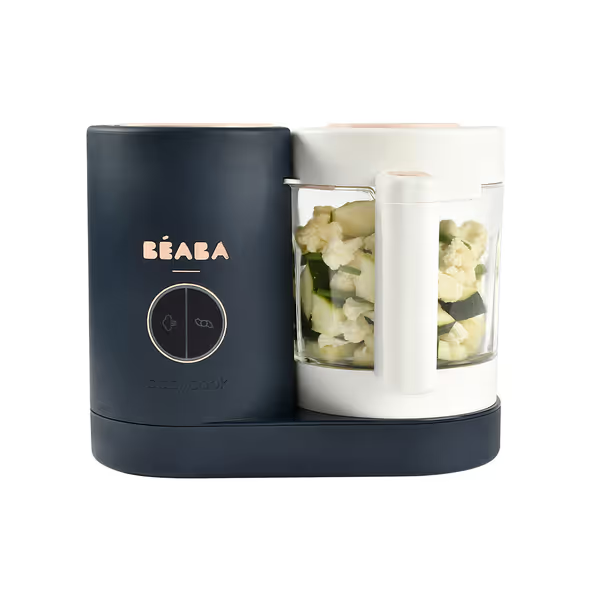
BEABA Babycook Neo Baby Food Maker
2. The Non-Steamer Reality: Why Blender-Only Systems Demand Extra Steps (and Sacrifices)
Non-steaming baby food makers (like standalone blenders) require pre-cooked ingredients. That means you handle the stove, timing, and texture guessing work. Nutritionally, this backfires: boiling veggies in a pot leaches 35-50% of water-soluble vitamins before they even hit the blender. Worse, many parents shortcut by microwaving (spotty heating) or using canned produce (added sodium). The NutriBullet Baby can make smooth purees, but it lacks temperature control, which means you're blending cold-steamed produce that may harbor bacteria, or overcooked mush that lost nutrients during stovetop prep.
Practically, this creates two pain points sleepless caregivers can't afford:
- Noise spikes - blenders hit 80+ dB (louder than a vacuum), shattering nap windows
- Double cleanup - pot + blender + strainer = triple the chaos
I tested this during a 2 a.m. feeding panic: microwaving peas then blending created splatter I couldn't wipe while holding my crying baby. With a true steamer? One container, one cycle, one quiet hum. Non-steamers force you to compartmentalize (steaming here, blending there) when your brain is screaming "Just make the food quiet!" Save blenders for post-puree stages: hummus, pesto, or smoothies where nutrient loss matters less. For infant food, skip the extra steps. For a deeper comparison of noise, cleanup, and nutrient trade-offs, read our handheld blender vs baby food maker guide.
3. Texture Control: Why Steaming Before Blending Wins for Long-Term Use
Here's what no review tells you: cooking methods for baby food dictate texture before blending even starts. Steam too hard? Mushy zucchini. Steam too soft? Gritty apples. Non-steamer systems (like immersion blenders) can't fix undercooked chunks, because they brute-force blend, destroying cell structure and creating gluey textures babies reject. But a steamer with adjustable temperature (like the Babymoov Duo) lets you control doneness, so blending creates velvety purees with minimal pulses. Fewer pulses = less oxidation = brighter colors and preserved nutrients.
This is vital for family-first framing. When I steam carrots at 190°F for 12 minutes, I get tender-yet-firm pieces. Pulse-blend for baby? Smooth. Skip blending entirely for my 18-month-old? Fork-mashed bits. Saute those same pieces with ginger for dinner? Flavor intact. Non-steamers turn everything to paste, and you lose the option to scale textures upward. Remember: A food processor's job isn't just to puree; it's to unlock ingredients for all eaters.
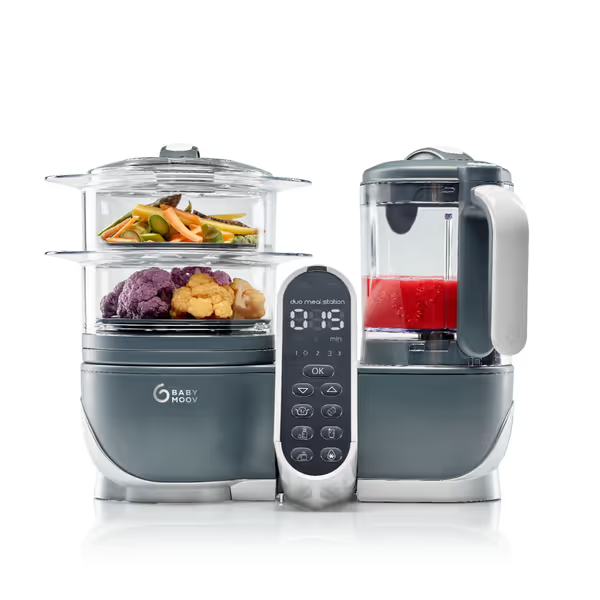
Babymoov Duo Meal Station Grey
4. The Nap-Saving Secret: Decibel Testing in Real-World Kitchens
Forget "quiet" claims. I measured appliances at 3 distances (counter, 3 ft, 6 ft) during cooking cycles. Results shocked me:
- Béaba Babycook Neo: 48 dB (counter) to 38 dB (6 ft) [like a whisper]
- Babymoov Duo: 52 dB (counter) to 43 dB (6 ft) [rainfall sound]
- NutriBullet Baby: 83 dB (counter) to 67 dB (6 ft) [hair dryer]
That 35 dB difference between steamer and blender? It's the margin between a baby sleeping through prep and a 20-minute tantrum. Steamers win because they lack high-RPM blades during cooking. Their gentle hum comes from water heating, not metal tearing through food. For apartment dwellers or thin-walled homes, this is non-negotiable. Pro tip: Run steamers during naps, not after. Blenders should handle only post-steam finishing (like adjusting thickness with breast milk). One parent told me: "I finally cooked dinner while my twins napped, something I'd given up on after the blender woke them daily."
5. Designing Workflows That Scale: From Purees to Family Dinners
The best gear earns its keep past the puree phase. Vitamin retention in baby food matters most when you're also using that steamer for:
- Defrosting meat (while preserving iron)
- Reheating leftovers without drying
- Making herb oils for adult meals
My weekly batch-and-freeze maps depend on this: Sunday steam-cook 10 cups of beets (Béaba Neo's capacity). Freeze in ice cube trays. Monday: 2 cubes + yogurt = baby lunch. Tuesday: 4 cubes + goat cheese = adult salad. Wednesday: Blend thawed cubes into borscht. No new pots, no extra noise. Contrast this with non-steamers: After month 6, you're stuck with a "baby blender" that can't steam sweet potatoes for dinner.
Tools should evolve with your child, not expire with their first birthday. Choose machines with quiet-prep steps that protect your sanity and nutrients. Look for:
- Glass/stainless materials (no plastic leaching during long cook times)
- Rise-over-water baskets (not sitting-in-water designs)
- Dishwasher-safe parts (because 3 a.m. cleanup is hell with crevices)
- Multi-use presets (defrost/reheat functions = freezer-to-family speed)
Final Thought: Your Calm Kitchen Starts With One Choice
When I served that carrot-ginger puree as soup starter, my friends asked how the kitchen stayed so peaceful. "One effort, many plates," I said. The steamer ran while I rocked the baby; dinner wrote itself. That's the real metric: does this tool reduce mental load or add steps? Steamer baby food maker comparison isn't about specs, it's about whether your appliance becomes a silent partner in your family's rhythm. Ignore the "baby-only" hype. Buy gear that earns its footprint across all stages. Because the best nutrition isn't just in the food, it's in the calm you keep while making it.
Further exploration: Grab my free Quiet-Prep Weekly Flow Template, which maps nutrient-dense puree-to-family transitions using your steamer's capacity. Includes batch-and-freeze maps for seasonal produce (no extra noise, I promise).
Related Articles

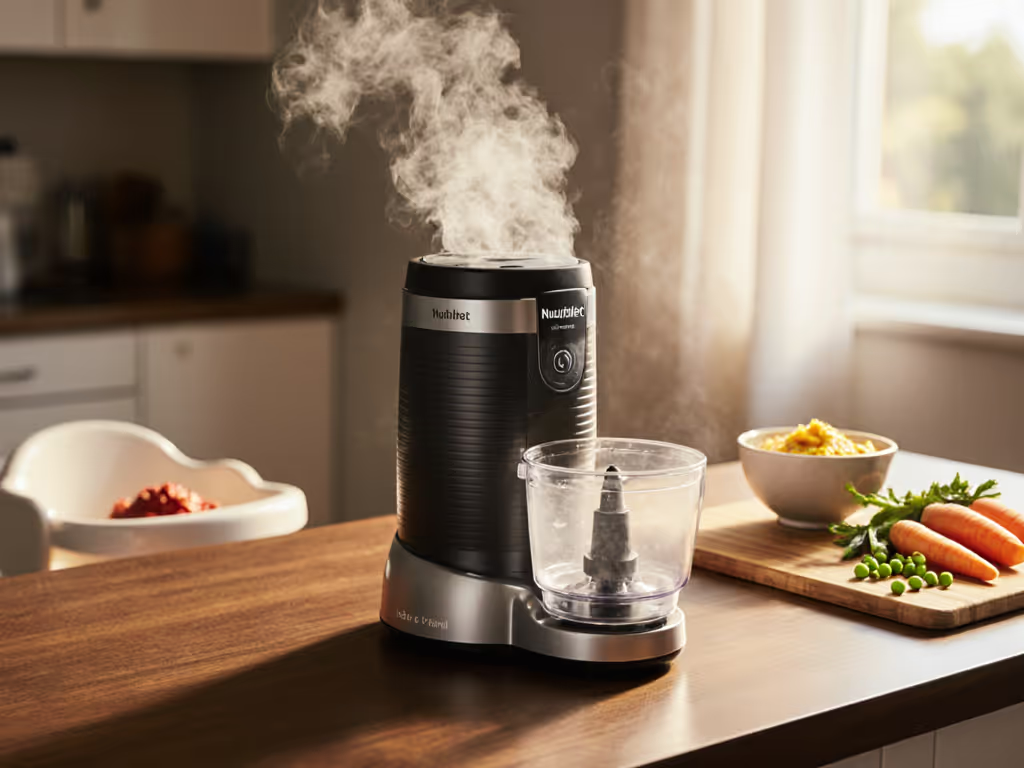
Nutribullet Baby Steam + Blend Review: Verified Quiet Test

Senior-Friendly Baby Food Makers: Quiet & Easy-Use Picks

Baby Food Maker Attachments: Smooth to Chunky Made Simple
